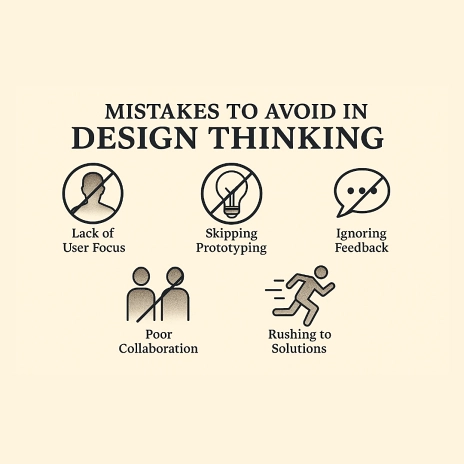Category: Design Thinking

Top 10 Prototype Mistakes to Avoid in Design Thinking
Posted on July 11, 2025 by Shashikant Kalsha
Top 10 Prototype Mistakes to Avoid in Design Thinking Creating effective prototypes is a critical step in the design thinking process. It’s how we test ideas, gather feedback, and refine our solutions. However, rushing into prototyping without the right mindset or a clear strategy can unfortunately lead to wasted time, missed insights, and ultimately, flawed […]